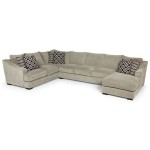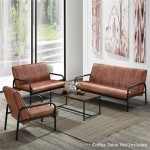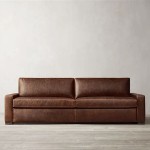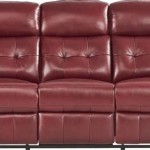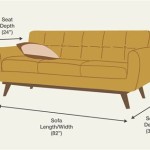Standard Size Sofa Measurements
Understanding standard sofa dimensions is crucial for creating a functional and aesthetically pleasing living space. Whether furnishing a new home or replacing existing furniture, knowing the typical measurements helps ensure the sofa fits comfortably within the room and accommodates the desired number of people.
While the term "standard" offers a general guideline, it's important to recognize that variations exist among manufacturers and styles. However, familiarizing oneself with typical ranges provides a valuable starting point for furniture shopping and space planning.
One of the most critical measurements is the overall length or width of the sofa. This dimension dictates how much wall space the sofa will occupy. A standard three-cushion sofa typically ranges from 78 to 84 inches in length. Larger sofas, such as four-cushion models, can extend to 96 inches or more. Sectional sofas, due to their modular nature, offer greater flexibility in overall length and configuration.
Depth, the measurement from the front edge of the seat cushion to the back of the sofa, significantly impacts seating comfort. Standard sofa depth typically falls between 35 and 40 inches. Deep-seated sofas, designed for lounging, can exceed 40 inches in depth. Conversely, apartment-size sofas or those intended for smaller spaces may have a shallower depth, closer to 30 inches.
Height, measured from the floor to the top of the sofa back, is another important consideration. Standard sofa height typically ranges from 30 to 36 inches. However, styles like high-back sofas or those with prominent decorative features can reach heights exceeding 40 inches. Low-profile sofas, often seen in contemporary designs, may measure closer to 28 inches in height.
Seat height, the distance from the floor to the top of the seat cushion, directly affects ease of sitting and rising. A standard seat height measures approximately 18 to 20 inches. Variations exist, with some sofas offering higher or lower seat heights to accommodate individual preferences and physical needs.
Arm height, measured from the floor to the top of the armrest, also influences comfort and style. Standard arm heights generally range from 24 to 28 inches. Some sofas feature lower armrests, offering a more relaxed and casual feel, while others have higher armrests that provide additional support.
Beyond these fundamental measurements, other dimensions contribute to the overall fit and functionality of a sofa. Seat depth, the distance from the front edge of the seat cushion to the back cushion, impacts legroom and comfort. Back height, the measurement from the seat cushion to the top of the back, influences support and aesthetics.
When considering sofa dimensions, accounting for available space is paramount. Careful measurement of doorways, hallways, and the intended room ensures the sofa can be maneuvered into place without difficulty. Visualizing the sofa within the room, considering traffic flow and other furniture placement, is essential for creating a harmonious and functional layout.
Beyond the physical dimensions, factors such as style, material, and cushioning also contribute to the overall comfort and aesthetic appeal of a sofa. Traditional sofas often feature rolled arms, tufted backs, and ornate details, while contemporary styles emphasize clean lines and minimalist aesthetics. Material choices range from fabric upholstery in various textures and patterns to leather and synthetic options.
Cushion construction significantly influences seating comfort. Down-filled cushions offer a plush and luxurious feel, while foam cushions provide firmer support. Spring systems within the cushions contribute to durability and resilience.
Selecting the appropriate sofa size involves careful consideration of both the available space and the intended use. A small apartment may benefit from a loveseat or apartment-size sofa, while a spacious living room can accommodate a larger sectional or even multiple sofas. The number of people the sofa needs to seat comfortably also influences size selection.
Consulting manufacturer specifications or visiting furniture showrooms allows for firsthand assessment of sofa dimensions and comfort. Sitting on different sofa styles and comparing measurements helps determine the optimal size and configuration for individual needs and preferences.
Online resources, such as furniture retailer websites and design blogs, offer valuable information regarding standard sofa dimensions and space planning tips. Utilizing these resources can aid in making informed decisions and creating a well-designed living environment.
Ultimately, understanding standard sofa measurements empowers consumers to make informed choices, ensuring the selected sofa fits comfortably within the available space and meets the functional and aesthetic requirements of the living area.

Sofa Dimensions 101 Measuring For Your Perfect

Image Result For Standard Size Of Sofa In Mm Cool Couches Furniture Details Design

Sofa Size Calculator

Sofa Dimensions For 2 3 4 And 5 Person Couches Charts Diagrams Formal Living Room Designs Design

Tub Dimensions Inches Sofa Bed Size Small

Standard Sofa Dimensions For 2 3 4 And 5 Person Charts Diagrams Engineering Discoveries

Verona Sofa Birch Beige Urban Ladder

Sofa Sizes To Fit Your Space Sofology

Esquel Sofa Steel Grey Urban Ladder

Standard Sofa Dimensions For 2 3 4 And 5 Person Charts Diagrams Engineering Discoveries
Related Posts


